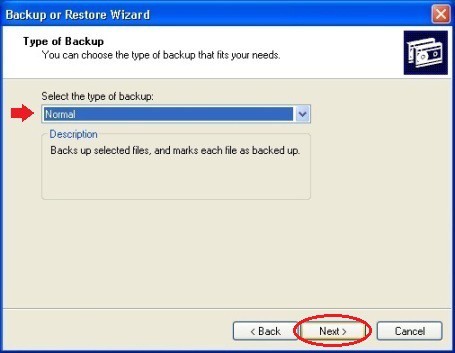In the realm of data protection, the Normal Backup, often referred to as a full backup, stands as the bedrock upon which comprehensive backup strategies are built. This method involves creating a copy of all data to a storage medium, ensuring a singular point of recovery for every file, application, or system. While straightforward and robust, understanding its place within a broader backup strategy, which also encompasses Incremental and Differential Backups, is crucial for optimizing data recovery processes.
This article will delve into the nuances of Normal Backup, compare it with other backup methods, and elucidate its pivotal role in safeguarding data.
Table of Contents:
- What is Normal Backup?
- Key Advantages of Normal Backup
- Understanding Backup Types: Normal, Incremental, and Differential
- Implementing a Normal Backup Strategy
- Use Cases and Scenarios
- Challenges and Considerations
- Tools and Technologies for Normal Backup
- Comparing Backup Methods: When to Use Each
- Conclusion
- References

1. What is Normal Backup?
Normal Backup, often termed as a full backup, is the process of copying every piece of data from a source to a backup storage location. This method doesn’t discriminate between new, changed, or unchanged files; every item is backed up, creating a complete snapshot of the data at a specific point in time. This snapshot includes files, folders, applications, and system settings, among other data types, making it the most comprehensive backup type available.
The process is straightforward: upon initiating a Normal Backup, the backup system scans the entire dataset and replicates it to the chosen storage medium. This medium could be anything from a local disk, an external hard drive, to cloud storage solutions. During this process, all files are marked as backed up, resetting any ‘data changed’ flags in the system to prepare for future incremental or differential backups.

In a normal backup, the archive attribute is marked for each file and folder that is backed up. If the file is later modified, the archive attribute is cleared, indicating that the file needs to be backed up again.
Normal backups are the safest form of backup but take the longest and use the most tape. They are also the easiest form of backup to perform a restore from because you generally need only one tape to perform the restore (unless the amount of information to be backed up exceeds the capacity of the tape).
2. Key Advantages of Normal Backup
- Complete Data Restoration: The primary advantage of Normal Backup is its ability to restore a system entirely from scratch. In the event of data loss, corruption, or a catastrophic system failure, a full backup ensures that every piece of data can be restored to its original state.
- Simplicity: Normal Backup operations are straightforward. Since every data piece is backed up regardless of its state, there’s no need to track changes between backups. This simplicity is a significant advantage when setting up a backup strategy for the first time or in environments where data integrity is paramount.
- Reliability: By creating a comprehensive data snapshot, Normal Backups minimize the risk of missing critical files during the backup process. This reliability is crucial for critical systems and data, ensuring that everything necessary for a full recovery is always available.
- Foundation for Incremental and Differential Backups: Normal Backup serves as the starting point for other backup types. Incremental and Differential Backups rely on a full backup as their reference point for tracking changes, making Normal Backups an integral part of a layered backup strategy.
3. Understanding Backup Types: Normal, Incremental, and Differential
To optimize data protection strategies, it’s essential to understand how Normal Backup fits within the broader spectrum of backup methodologies, particularly when compared to Incremental and Differential Backups.
3.1 Brief Overview of Incremental Backup
Incremental Backup is designed to save storage space and reduce backup time by only copying data that has changed since the last backup operation. Whether the previous backup was Normal or Incremental, this method only captures the modifications, creating a chain of backups that, together, represent a complete dataset. This efficiency comes at a cost: to restore data, one must apply the full backup and every subsequent incremental backup in sequence, which can extend recovery times.
3.2 Brief Overview of Differential Backup
Differential Backup strikes a balance between the thoroughness of a Normal Backup and the efficiency of an Incremental Backup. It backs up all the data that has changed since the last Normal Backup, ignoring any changes that have been backed up incrementally in the meantime. This method simplifies recovery compared to Incremental Backup, as only the last Normal and the last Differential backups are needed for a full restoration. However, Differential Backups can grow larger over time, as they accumulate more changes relative to the baseline set by the last Normal Backup.
These backup methods, when understood and applied correctly, offer a robust framework for protecting data against loss or corruption. The choice between them depends on specific needs regarding recovery time objectives (RTO), recovery point objectives (RPO), and available storage resources.
4. Implementing a Normal Backup Strategy
Implementing a Normal Backup strategy requires careful planning and consideration of various factors, including backup frequency, storage location, and security measures. Here’s how to develop a comprehensive Normal Backup strategy:
- Assessment of Data: Begin by identifying what data needs to be backed up. This includes not only files and databases but also applications and system settings. Understanding the scope of your data is critical to ensuring a complete backup.
- Selection of Backup Tools: Choose a backup solution that meets your needs in terms of scalability, reliability, and ease of use. There are many software options available, ranging from basic tools for small businesses to advanced solutions for large enterprises.
- Storage Media and Location: Decide on the storage media (local disks, external hard drives, or cloud storage) and the backup’s physical or cloud location. It’s advisable to follow the 3-2-1 backup rule: keep three copies of your data, on two different media, with one copy stored offsite.
- Scheduling Backups: Schedule your Normal Backups during off-peak hours to minimize the impact on system performance. The frequency of backups should be determined by the rate at which your data changes and your tolerance for data loss.
- Security Measures: Implement encryption for your backups to protect sensitive data. Additionally, ensure secure access controls are in place to prevent unauthorized access to the backup files.
- Testing and Restoration Plan: Regularly test your backup system to ensure it works as expected. Have a clear restoration plan in place so that data can be quickly restored when needed.
- Documentation and Training: Document your backup strategy and train relevant staff. Ensure that key personnel understand how to perform backups and restores, and keep this information updated.
5. Normal Backup: Use Cases and Scenarios
Normal Backup is particularly suited to several use cases and scenarios, including:
- Disaster Recovery: In the event of a catastrophic failure, such as a natural disaster, ransomware attack, or hardware failure, a Normal Backup allows for the complete restoration of the IT environment.
- New System Deployment: When deploying new systems or migrating to new hardware, Normal Backups can be used to transfer data comprehensively.
- Regulatory Compliance: For organizations subject to regulatory requirements regarding data retention and recovery, Normal Backups provide a straightforward method to comply with such regulations.
- Periodic Archiving: For long-term data preservation, creating periodic Normal Backups ensures that historical data remains accessible and intact.
6. Challenges and Considerations
While Normal Backup is an essential component of any data protection strategy, it comes with its set of challenges and considerations:
- Storage Requirements: Normal Backups require significant storage space since they copy all data every time. This can lead to higher costs and the need for efficient storage management.
- Backup Time: The process can be time-consuming, especially for large datasets, potentially impacting system performance and network bandwidth.
- Recovery Time: Although restoring from a Normal Backup is generally straightforward, the process can take a significant amount of time for large backups, affecting recovery time objectives.
- Frequency of Backups: Balancing the need for up-to-date backups with the storage and resource requirements of Normal Backups is a constant challenge. Too frequent backups increase costs and resource usage, while infrequent backups risk data loss.
- Security and Privacy: Ensuring the security of backup data, both in transit and at rest, is critical. Compliance with data protection regulations requires careful handling and protection of backup data.
Implementing a Normal Backup strategy effectively requires addressing these challenges through careful planning, the use of appropriate technologies, and ongoing management and review of the backup process.
7. Tools and Technologies for Normal Backup
Several tools and technologies facilitate Normal Backup operations, catering to various needs from personal use to enterprise-level requirements. Here’s a look at some prominent options:
- Software Solutions: Many comprehensive backup software solutions offer Normal Backup capabilities. Examples include Acronis True Image, Veeam Backup & Replication, and Symantec Backup Exec. These tools often provide additional features like encryption, compression, and cloud storage integration.
- Cloud Services: Cloud-based backup services, such as AWS Backup, Microsoft Azure Backup, and Google Cloud Backup, provide scalable and secure Normal Backup solutions. They offer the advantage of offsite storage without the need for physical infrastructure management.
- Operating System Features: Both Windows and macOS include built-in backup utilities, like Windows Backup and Restore and Time Machine, respectively. These are convenient for individual users or small businesses looking for straightforward backup options.
- Hardware Appliances: Some organizations may opt for dedicated backup appliances, such as those offered by Dell EMC or NetApp. These devices are designed to simplify backup processes in large-scale environments, offering robust storage and pre-configured software.
8. Comparing Backup Methods: When to Use Each
Choosing between Normal, Incremental, and Differential Backup methods depends on specific needs regarding data recovery, storage efficiency, and backup frequency. Here’s a guide to help decide:
- Normal Backup: Best for complete system restores and as a baseline for other backup methods. It’s ideal for scenarios requiring comprehensive recovery points, such as disaster recovery or major system upgrades.
- Incremental Backup: Suitable for environments with frequent data changes and limited storage capacity. It minimizes storage requirements and speeds up the backup process but requires a more complex restoration process, combining the last Normal Backup with all subsequent Incremental Backups.
- Differential Backup: A middle ground that offers easier recovery than Incremental Backups but with better storage efficiency compared to Normal Backups. It’s well-suited for systems with moderate change rates, allowing quicker recovery times without the storage overhead of daily Normal Backups.
9. Conclusion
Understanding and implementing a Normal Backup strategy is fundamental to any comprehensive data protection plan. By offering a complete snapshot of data at a point in time, Normal Backup ensures that organizations can recover from disasters or data loss incidents with confidence. Balancing the use of Normal, Incremental, and Differential Backups, based on specific recovery objectives and storage capabilities, allows for optimized data protection strategies tailored to individual needs.
10. References
- “Data Protection for Virtual Data Centers” by Jason Buffington – A comprehensive guide to modern backup strategies, including detailed discussions on Normal, Incremental, and Differential Backups.
- “Backup & Recovery: Inexpensive Backup Solutions for Open Systems” by W. Curtis Preston – Offers a deep dive into backup techniques, tools, and best practices, including chapters dedicated to Normal Backup strategies.
- RFC 3280 – Internet X.509 Public Key Infrastructure Certificate and Certificate Revocation List (CRL) Profile
- RFC 3647 – Internet X.509 Public Key Infrastructure Certificate Policy and Certification Practices Framework
- Backup
- Windows Backup